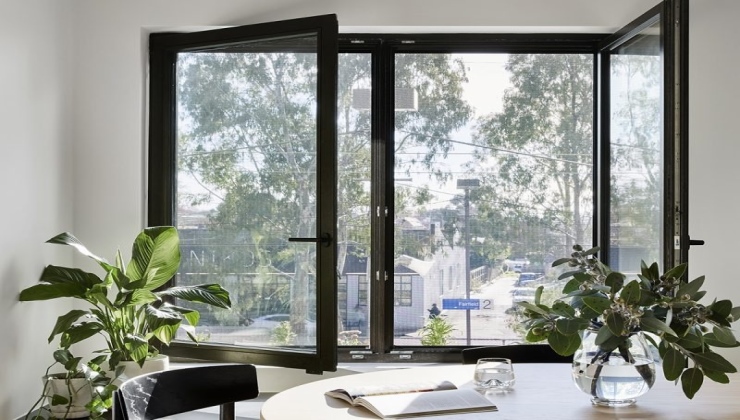Modern window constructions, including popular European windows, are becoming more and more functional and ergonomic. Of all window variants, tilt and turn windows stand out for their practicality, attractive design and functionality. They provide the perfect combination of comfort and security, making them a popular choice for many homeowners.
Design and functionality of tilt and turn windows
Tilt-and-turn windows are window frames that can open both horizontally and vertically. They have two main functions: turning and tilting. When tilting, the window opens inwards, allowing ventilation and access to the outside of the glass for cleaning. When tilting, the window opens from above, providing safe and controlled ventilation even if there is a small gap.
Materials: quality and durability
Tilt and turn windows can be made from a variety of materials such as wood, plastic and aluminium. Each has its own advantages and disadvantages. Wooden windows provide natural thermal insulation and environmental friendliness, but require regular care and maintenance. Plastic windows are easy to install, require minimal maintenance and have good thermal insulation properties. Aluminium windows are strong and durable, but require additional thermal insulation measures.
Security technologies for tilt and turn windows
An important aspect of the reliability of tilt and turn windows is security. Modern window systems are equipped with various technologies such as multi-system locks and anti-burglary mechanisms that prevent unauthorised access. In addition, special handles and locks make it possible to control the opening of the window depending on security and ventilation needs.
Energy efficiency and the benefits of passive cooling
Tilt and turn windows have excellent thermal insulation properties, making them energy efficient. Insulating glazing and seals help to keep heat inside and keep cold air out. In addition, the special design of the windows provides passive cooling with natural air exchange, which reduces dependence on air conditioning and saves energy.
Overview of opening options and their features
In the world of tilt and turn windows, there are several opening options: single or double opening, opening around a vertical or horizontal axis, and mixed options. Each has its own features and advantages, and choosing the most suitable option depends on the specific needs and preferences of the owner.
Examples of successful use of tilt and turn windows
Tilt and turn windows are widely used in a wide variety of building types, including residential, commercial and public buildings. They are effective both in large cities where external noise can be noticeable, and in country houses where free ventilation and access to fresh air is important.
Conclusions
Tilt and turn windows are a functional and aesthetically pleasing choice for many homeowners. Their reliability, ease of use, energy efficiency and ability to ventilate safely make them a popular solution. When choosing tilt and turn windows, it is important to pay attention to the quality of materials, security technology and the individual needs of each homeowner.

